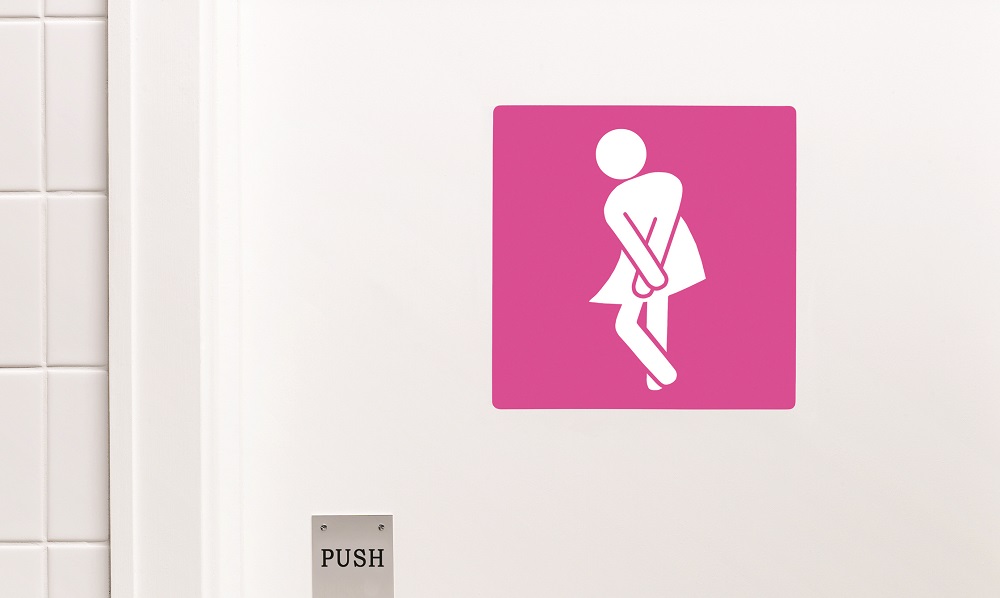A sudden and urgent need to urinate, burning pain when passing urine, and lower belly pain and pressure: For many postmenopausal women, these symptoms of a urinary tract infection (UTI) are distressing and familiar.
UTIs are the most common infections in adult women, and they get even more common with age. In fact, after menopause, the number of UTIs doubles. Recurrent UTIs also become more common after menopause, with an increased risk of hospital admission and serious complications if the infection spreads to the kidneys. There is a simple treatment to reduce the number of UTIs and the risk associated with recurrent UTIs in older women, but fat too few doctors are prescribing it.
A simple treatment
The treatment is topical low-dose vaginal estrogen. It entails applying a vaginal cream about twice per week. This treatment is so successful at preventing recurrent UTIs in women after menopause that it is the standard of care according to the American College of Obstetricians and Gynecologists (ACOG), which says it can decrease UTIs by more than 75 percent.
A 2023 study, published by the American Journal of Obstetrics & Gynecology, followed about 6,000 women with an average age of 70 who were diagnosed with recurrent UTIs. The diagnosis of recurrent UTI required three or more UTIs confirmed by a urine culture in one year. The women in the study averaged four infections per year. After starting a low-dose vaginal estrogen cream, more than 55 percent of these women had one or fewer UTIs in the following year and more than 30 percent had none.
How estrogen helps
In the United States, the average age of menopause (defined as one year without a period) is 51. Common symptoms include hot flashes, night sweats, and mood changes. All these symptoms are caused by falling levels of the female hormone estrogen. These symptoms usually go away in a few years, but one symptom that stays is vaginal dryness.
For many women, the first sign is pain during intercourse. Estrogen helps keep the vagina moist and the vaginal tissues plump and elastic. Without estrogen, the lining of the vagina becomes dry and thin, which causes pain during intercourse.
Loss of estrogen also changes the normal balance of vaginal and bladder bacteria. As estrogen falls, healthy bacteria are replaced by an overgrowth of unhealthy bacteria. The unhealthy bacteria are more likely to cause infections because they can more easily invade dry tissues in the vagina and urethra that are no longer protected by moisture and thickness.
Low-dose vaginal estrogen cream (which can also be prescribed as a tablet or ring insert) prevents and reverses these changes. Cream is the most common way to use vaginal estrogen because it is easy to use and inexpensive. This treatment is prescribed about twice per week for a few months and can then be reduced. It takes a few weeks to take full effect. Most women will be able to stay off antibiotics and if sexually active, notice that sexual intercourse is less painful.
Why don’t more doctors prescribe vaginal estrogen?
Some providers are just not aware of how effective this treatment is. Others are afraid of side effects. Using estrogen to treat other symptoms of menopause, like hot flashes, bone loss, or to reduce the risk of heart disease is called hormone therapy. This therapy uses higher doses of estrogen that is absorbed and travels through the blood to different parts of the body. This is called systemic hormone treatment, which has been linked to an increased risk of stroke, blood clots, and breast cancer. In fact, the most recent guidelines from the U.S. Preventive Services Task Force recommends against systemic hormone therapy to prevent osteoporosis or cardiovascular disease.
Low-dose vaginal estrogen, however, is not systemic hormone therapy. It is minimally absorbed into the bloodstream. It acts locally on vaginal tissues. Almost all the estrogen stays in the vaginal tissue. The fear of side effects from low-dose vaginal estrogen is a misconception held by many doctors. In fact, there is no data to link this estrogen to heart disease, blood clots, or breast cancer. Use of low-dose vaginal estrogen is even considered safe by most oncologists for women with a history of breast cancer.
What about antibiotics?
Antibiotics are an important way to treat and prevent UTIs. An active infection should be treated and may respond quickly to a few days of antibiotics. However, overtreatment is a growing problem. About 70 to 80 percent of recurrent UTIs may become resistant to common antibiotics. Antibiotics are sometimes used for six or more months in low doses to prevent UTIs, but this can also contribute to antibiotic resistance.
Vaginal estrogen cuts down the need for antibiotics and the danger of antibiotic resistance. The ACOG recommends seeing your doctor if you have two or more UTIs within six months. If you see your healthcare provider for recurrent UTIs and you are past menopause, ask your doctor about vaginal estrogen.


